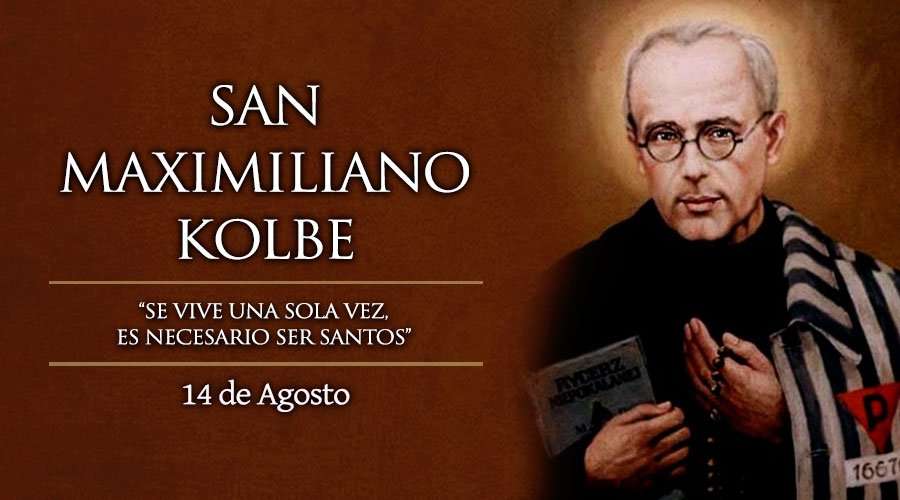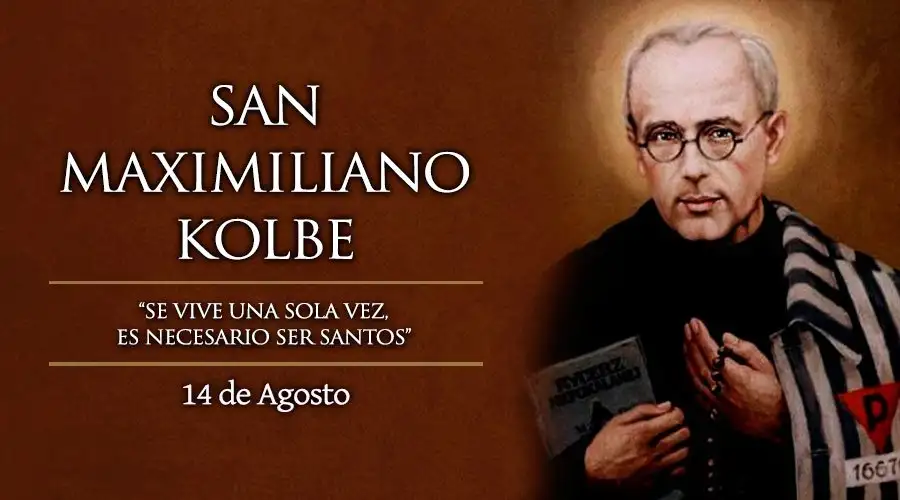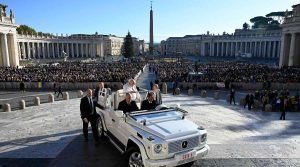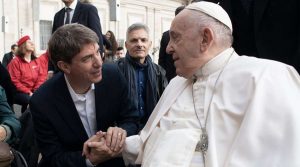Today we remember Saint Maximilian Kolbe, martyr of life, victim of ideology




Every August 14, the Catholic Church celebrates Saint Maximilian Maria Kolbe (1894-1941), a priest and conventual Franciscan friar who died voluntarily in the Auschwitz concentration camp (Poland) during World War II. Kolbe asked to be exchanged for a prisoner about to be executed.
Saint Maximilian Kolbe was a great promoter of the devotion to the Immaculate Heart of Mary and one of the founders of the “City of the Immaculate”, a religious complex built near Warsaw that had a seminary, a monastery, a publishing house and a station. radio
Two crowns: one white and one red
Maximilian, whose given name was Raymond, was born on January 8, 1894 in the city of Zdunska Wola, Kingdom of Poland (at the time part of the Russian Empire).
According to his mother’s story -recorded after the death of the saint-, when Raymond was a child, he did a mischief that she strongly reproached: “My child, who knows what will become of you!”. Days later, her mother saw that little Raimundo had changed his attitude and that he often prayed crying before a small altar that she had between two closets. She asked him to tell her what was wrong. Then, with eyes full of tears, Raymond answered:
“Mom, when you reproached me, I asked Our Lady a lot to tell me what would become of me. The same in the Church, I begged him again. Then the Virgin appeared to me, holding two crowns in her hands: one white and one red. The white one meant that she would persevere in purity and the red one that she would be a martyr. I replied that she accepted both. Then the Virgin looked at me sweetly and disappeared.
This fact marked the life of Maximilian, who from then on professed the greatest devotion to the Immaculate Virgin.
Knight of the Immaculate, son of Saint Francis
Years later, Raimundo found himself called to religious life and entered the Order of Conventual Franciscans. In the novitiate (1910) he changed his name to “Maximilian” in honor of Saint Maximilian of Celeia martyr. In 1911 he professed his first vows and in 1914 his final vows. It is then that he adopts the additional name of “Mary”, in honor of the mother of Jesus.
As a student of philosophy and theology in Rome (Pontifical Gregorian University), he founded the “Military of the Immaculate” with the aim of promoting love and service to the Virgin and the conversion of souls to Christ. In 1918 he was ordained a priest.
Back in Poland, he published the monthly magazine “Knight of the Immaculate” and in 1929 founded the “City of the Immaculate” in Niepokalanów, 40 kilometers from Warsaw. He then volunteered as a missionary in Asia. Established in Japan, he founds a new “City of the Immaculate” (Mugenzai No Sono) and publishes the magazine “Knight of the Immaculate” in Japanese.
The return to Poland and the beginning of the War
Maximilian returns to Poland a few years before the start of the Second World War, when the social and political climate was already in turmoil. There he found that “El Caballero de la Inmaculada” – the publication he founded and directed – had moved away from his strictly religious line, taking an inappropriate turn towards the political. Maximilian, takes up the direction to straighten what had gone crooked, and does not miss the opportunity to criticize from the publication the ideas of National Socialism, contrary to faith.
With this, Fr. Kolbe was exposed to Nazi persecution. Meanwhile, he heroically continued his priestly service: he encouraged people to keep the faith and draw closer to the Lord. In solidarity with the Jewish people, he refused to be registered on the list of “Germans” -his father was German, his mother Polish-, with which he would have been spared further problems or harassment. However, his fundamental option was respect for all humanity, without exclusions.
Maximilian maintained a firm position against National Socialism. After some verbal confrontations with the Nazis, he is arrested and sent to concentration camps. Assigned to Auschwitz, assigned to the barracks, he wanted to be a sign of God’s love in a place that everyone believed God had abandoned.
The greatest love: to give life
One day a prisoner escaped from the concentration camp and the German soldiers, in retaliation and as a show of severity, selected 10 prisoners to starve to death in the dungeons. The tenth number went to Sergeant Franciszek Gajowniczek, also a Pole, who exclaimed: “My God, I have a wife and children.”
Given this, Fr. Maximiliano offers to exchange himself with the condemned man. The priest is taken underground, where he encourages the other prisoners to join together in prayer. After several days, without food or water, they have all died and only he is left alive. To vacate the place, the soldiers decided to give him a lethal injection.
Father Maximilian prayed like this until the end: “Grant me to praise you, Holy Virgin, grant me to praise you with my sacrifice. Grant me for you, only for you, to live, to work, to suffer, to spend myself, to die…”
Pope Saint Paul VI declared Fr. Kolbe Blessed in 1971. He was canonized by Saint John Paul II -his compatriot- in 1982. In the ceremony the Polish Pope honored him with these words: “Maximilian Kolbe did as Jesus, he did not suffer death but gave life.
Visit to Auschwitz
On July 19, 2016, Pope Francis visited the “hunger cell” – the place where Saint Maximilian Kolbe was locked up until the day of his death – during his visit to the Auschwitz concentration camp, on the occasion of the World Day of Death. Youth, held that year in Poland.
For more information, we invite you to visit our special section on Saint Maximilian Kolbe:







